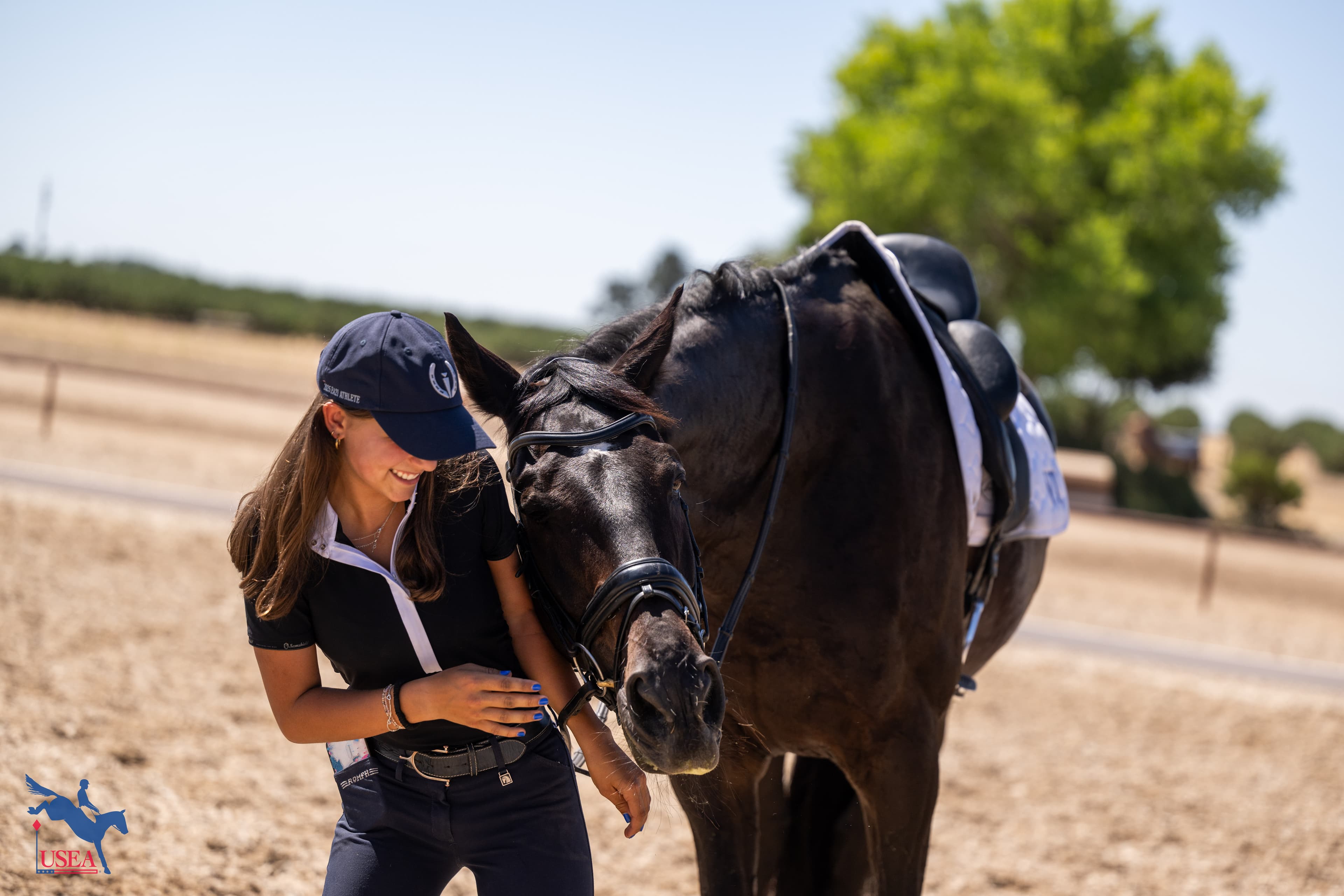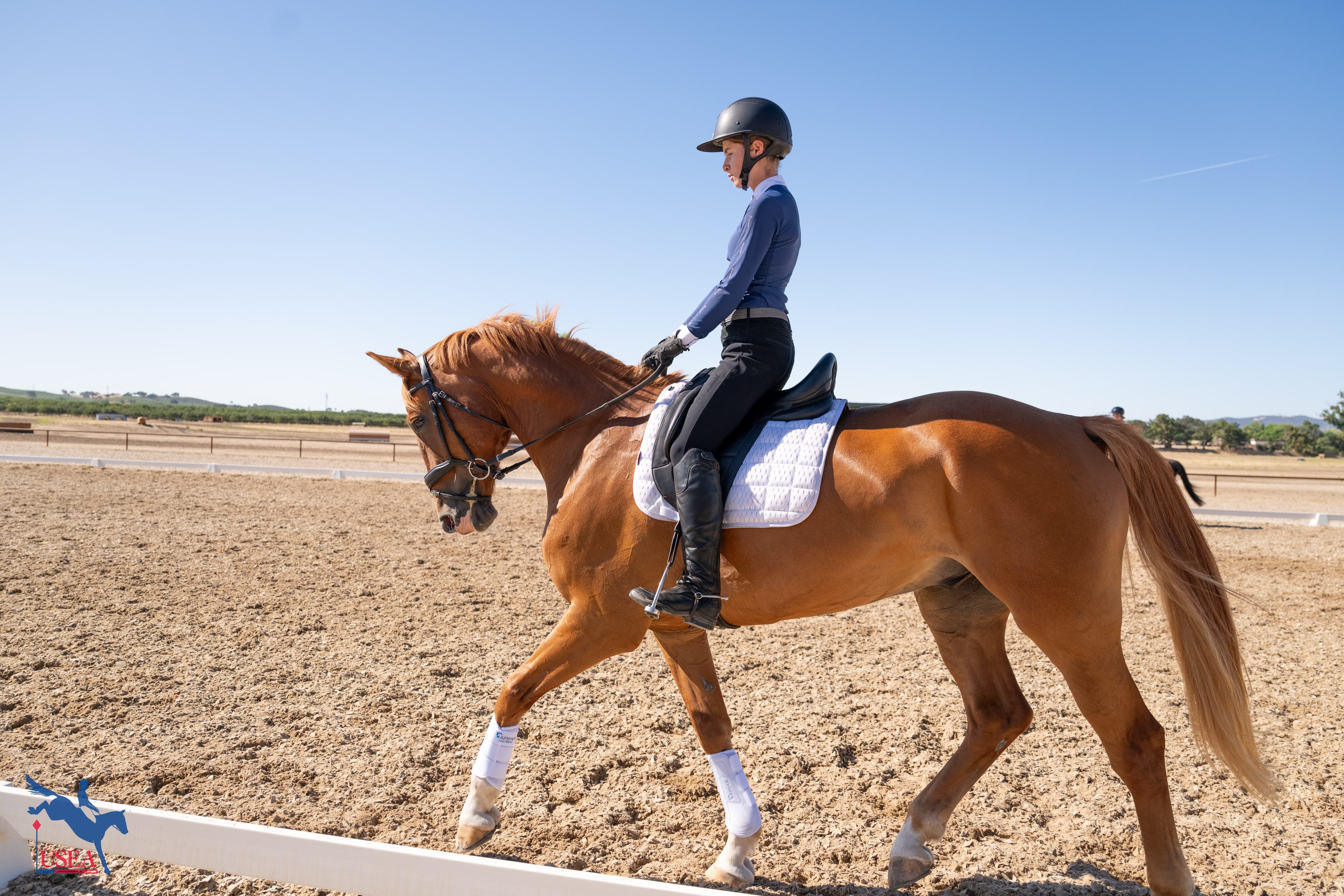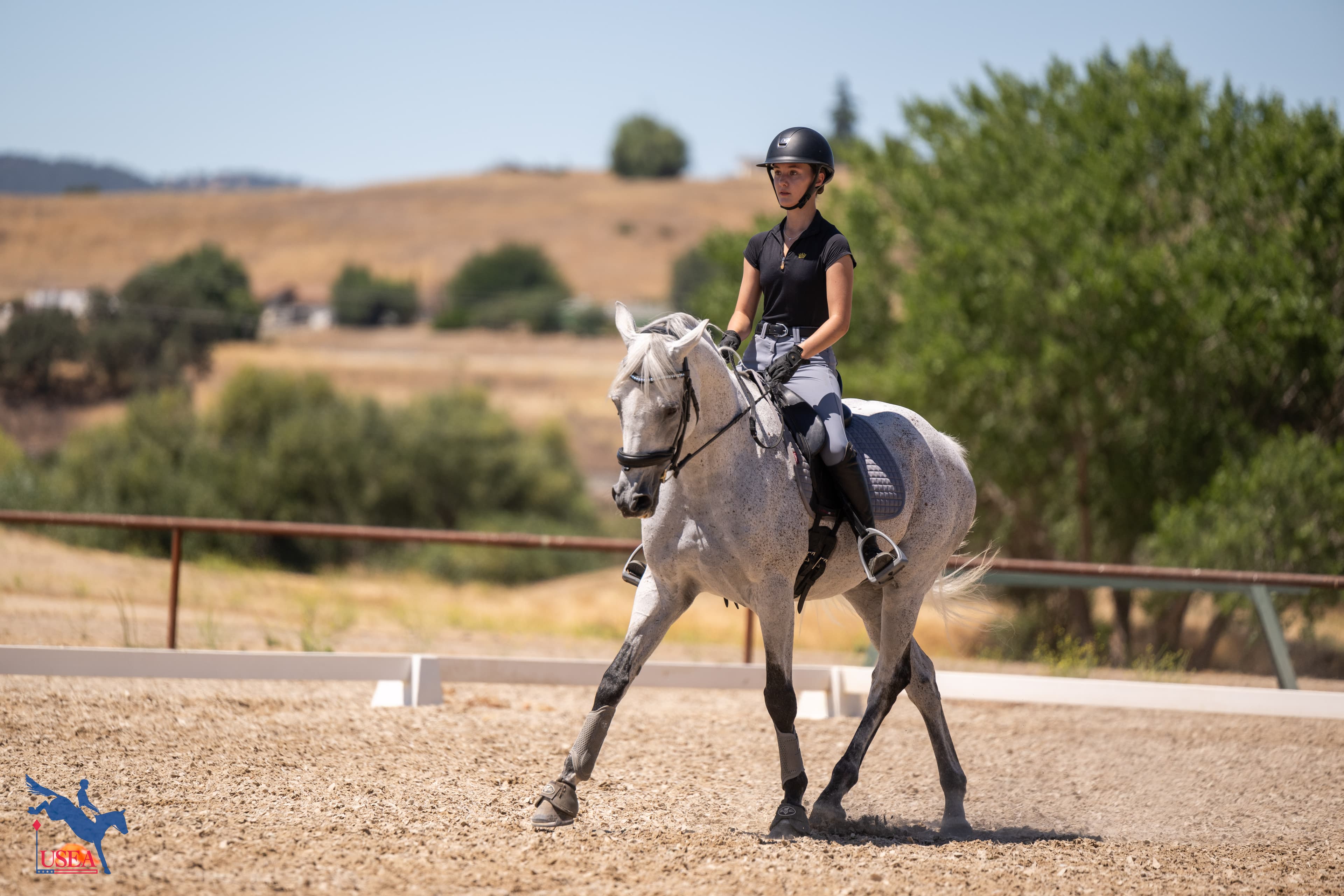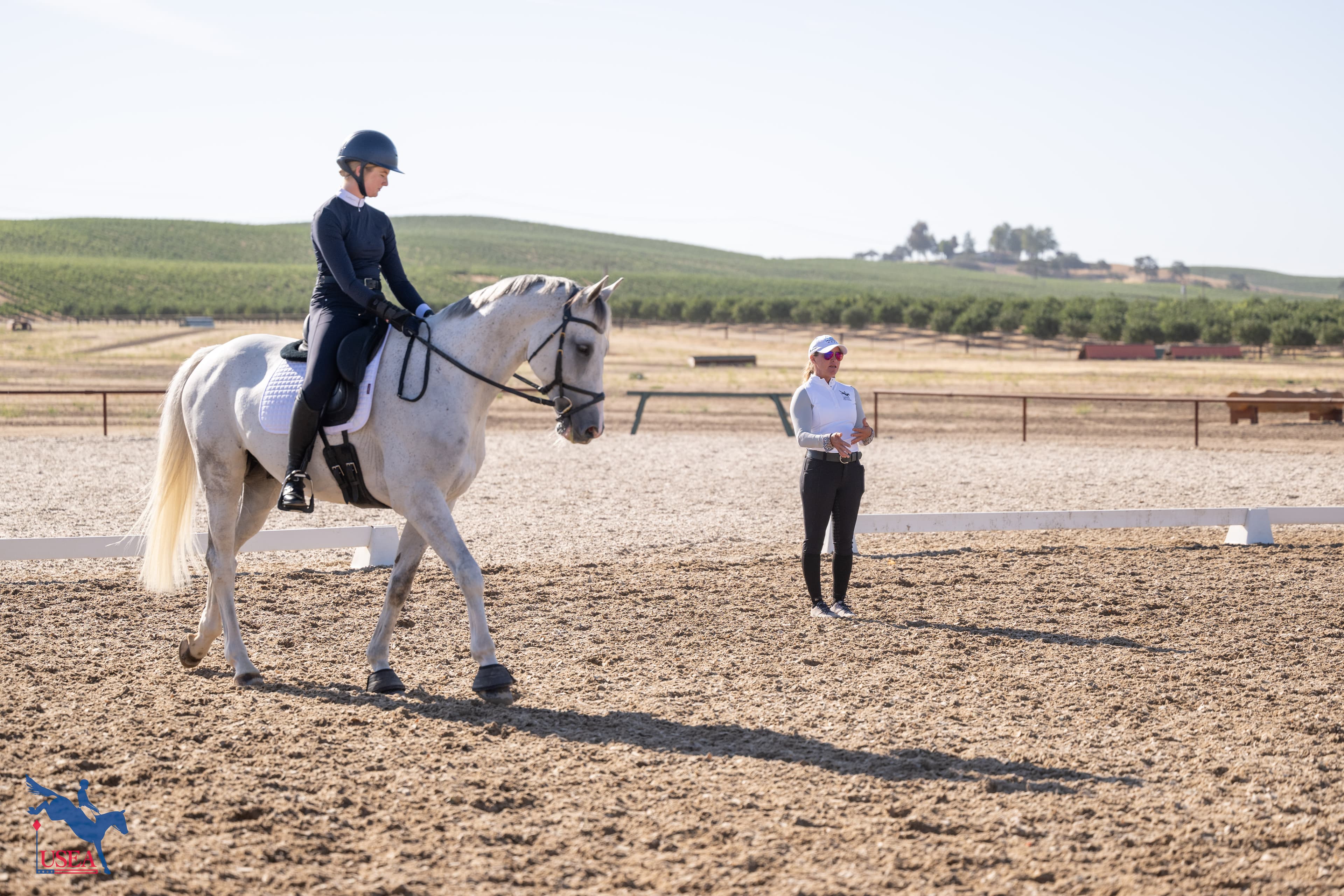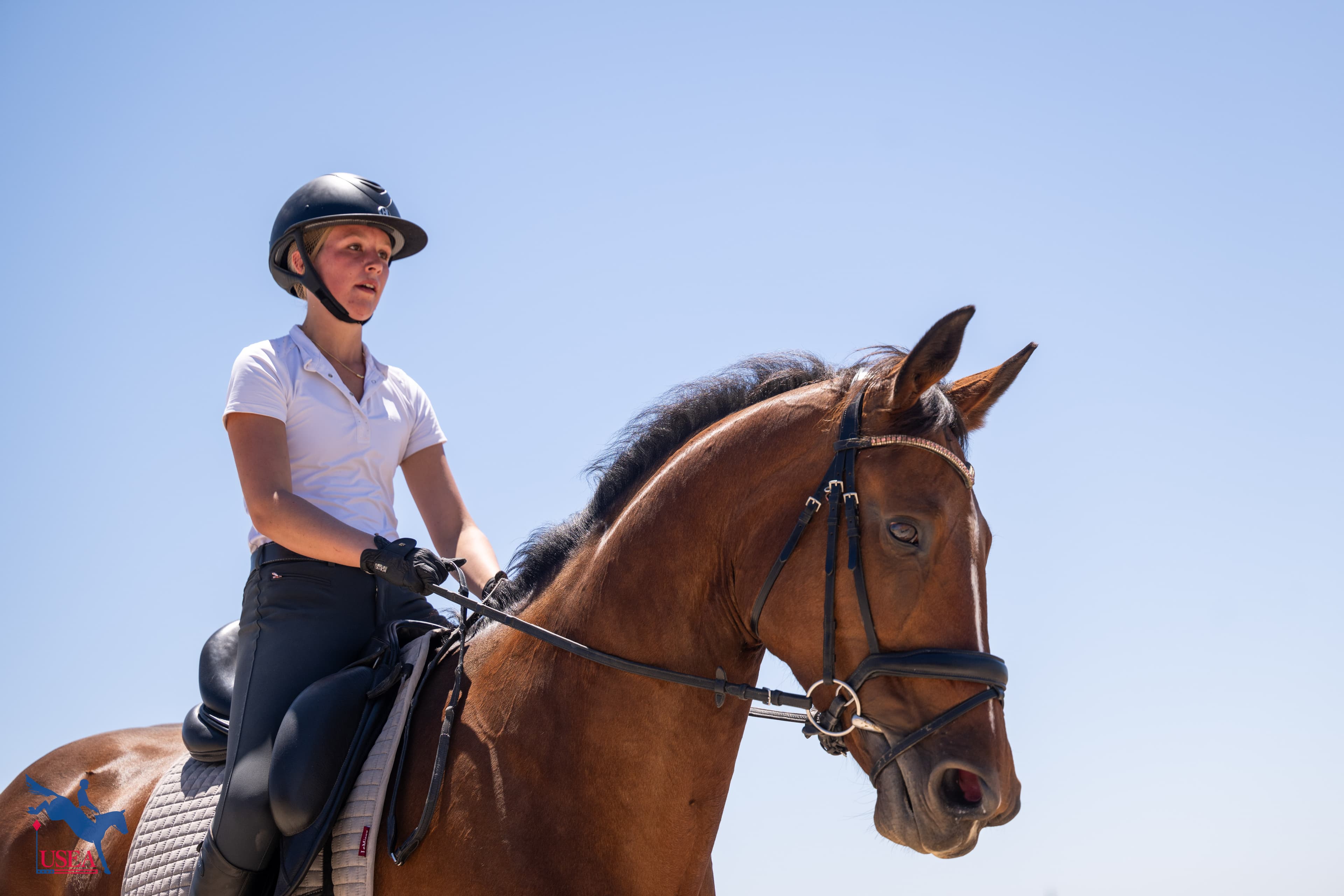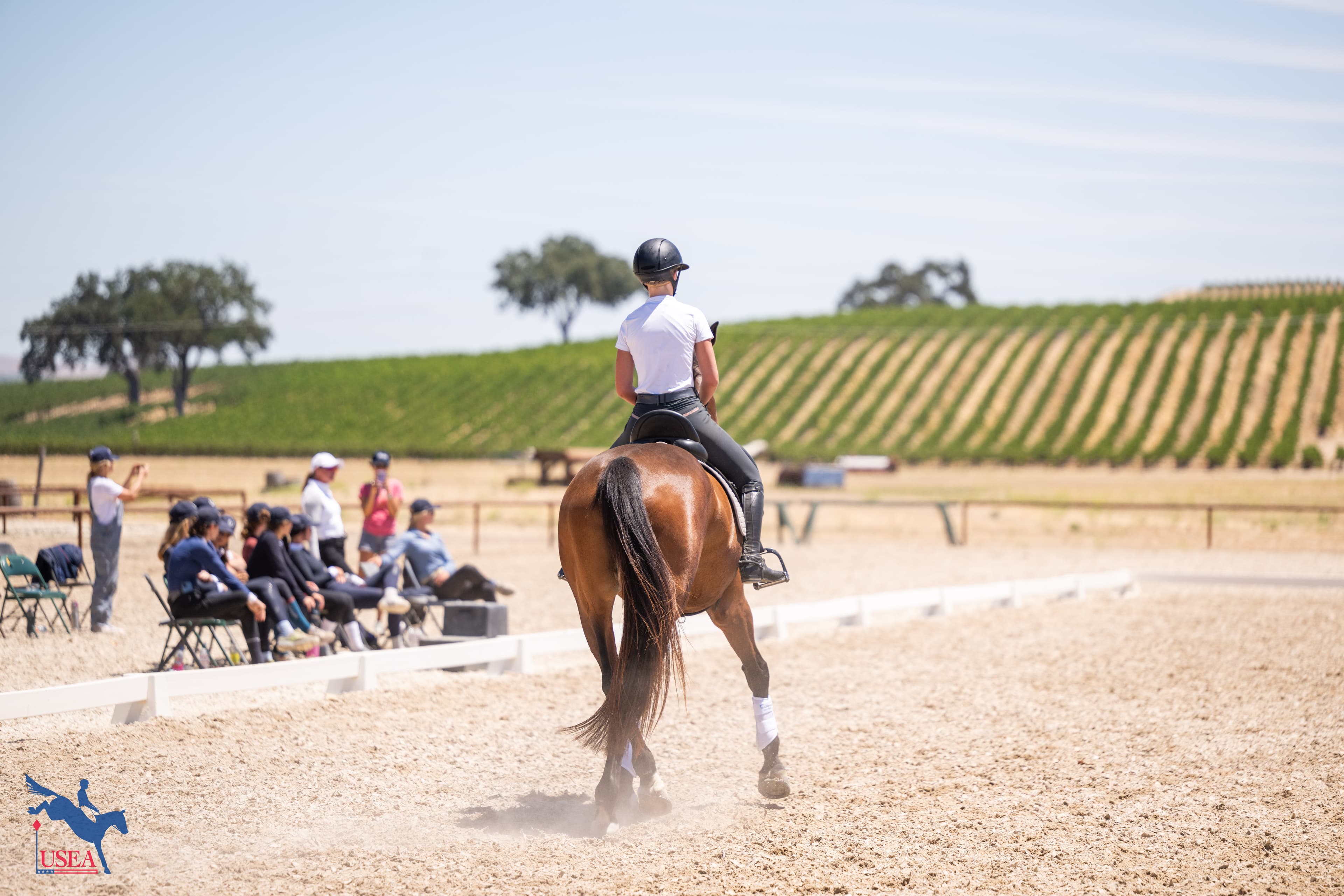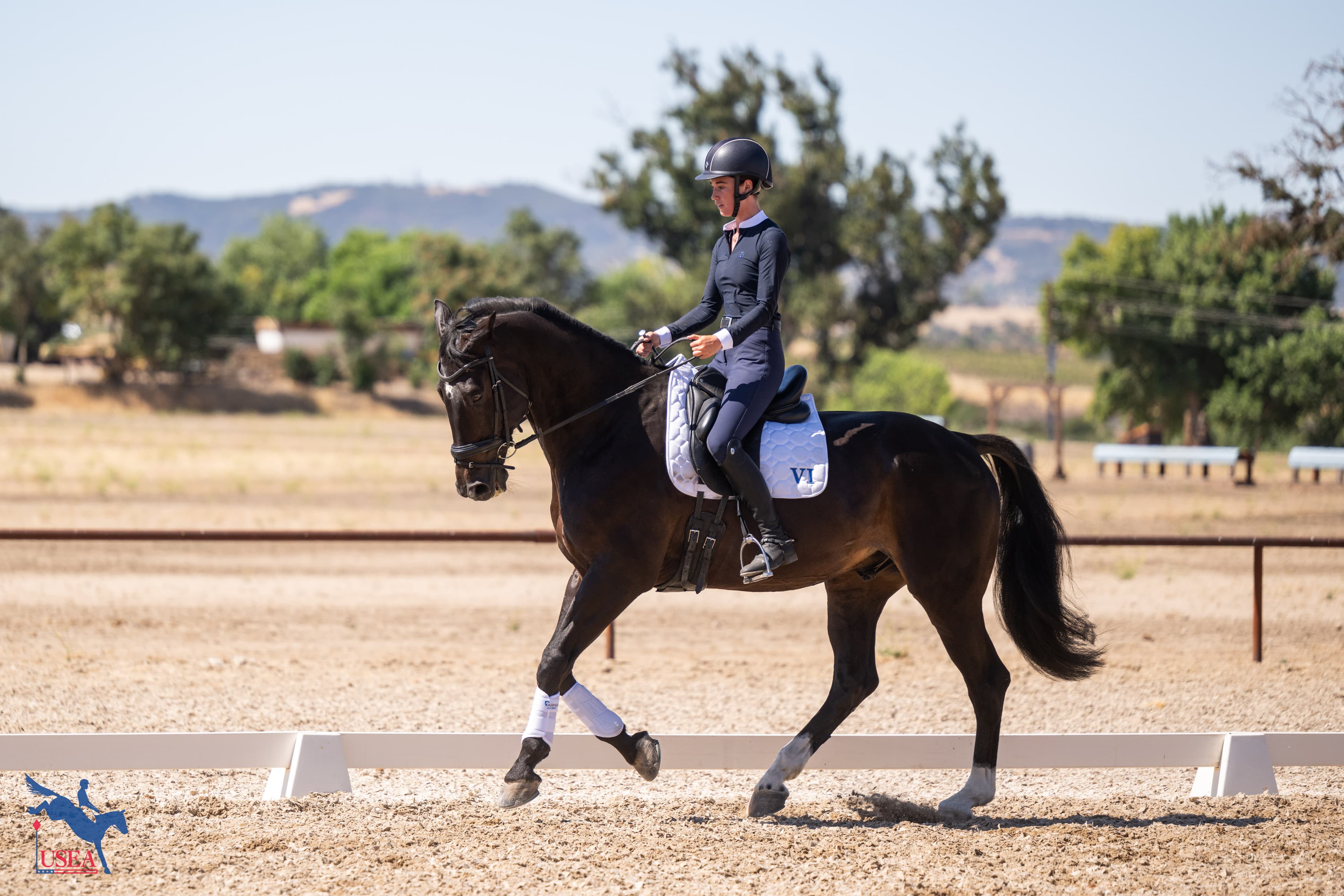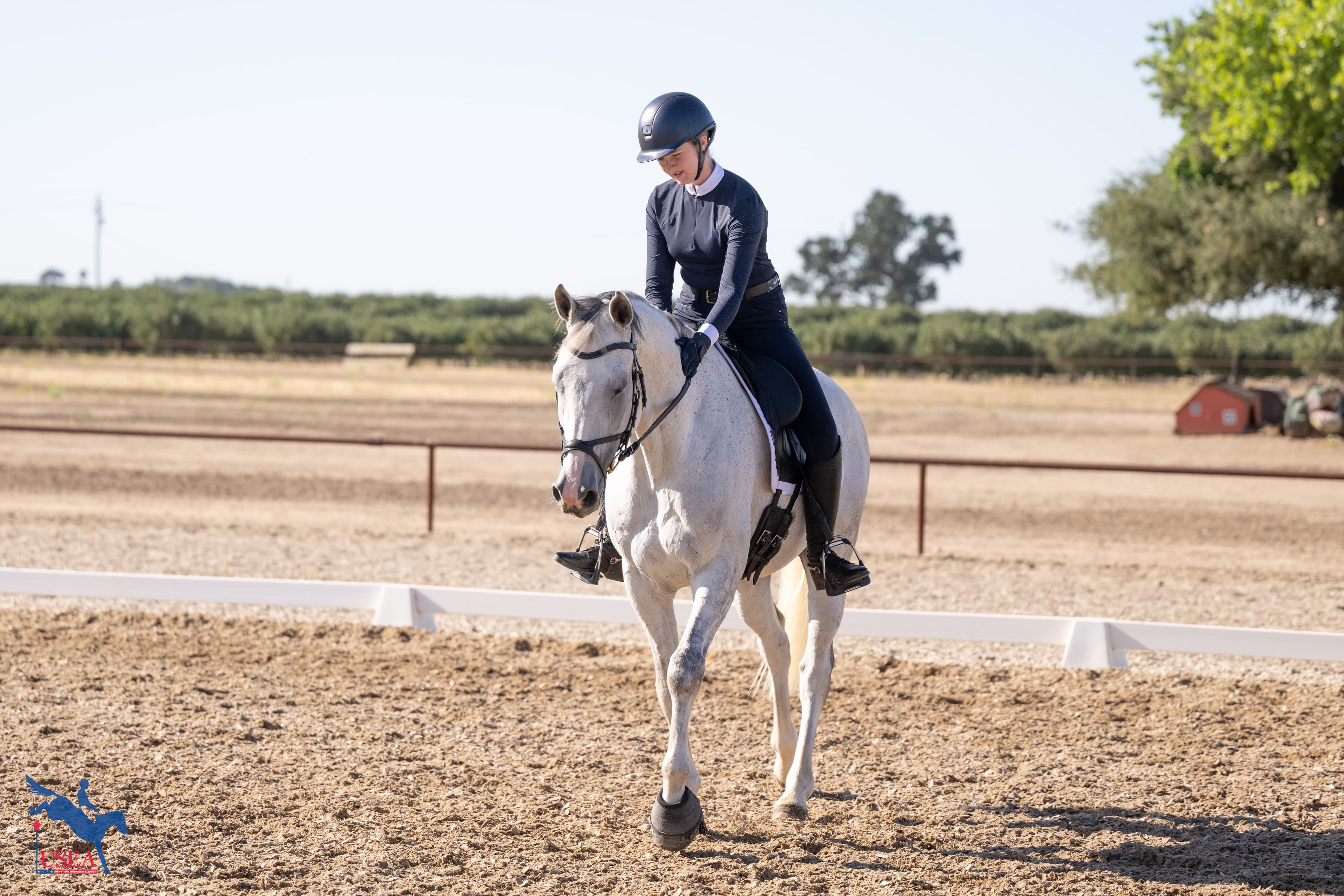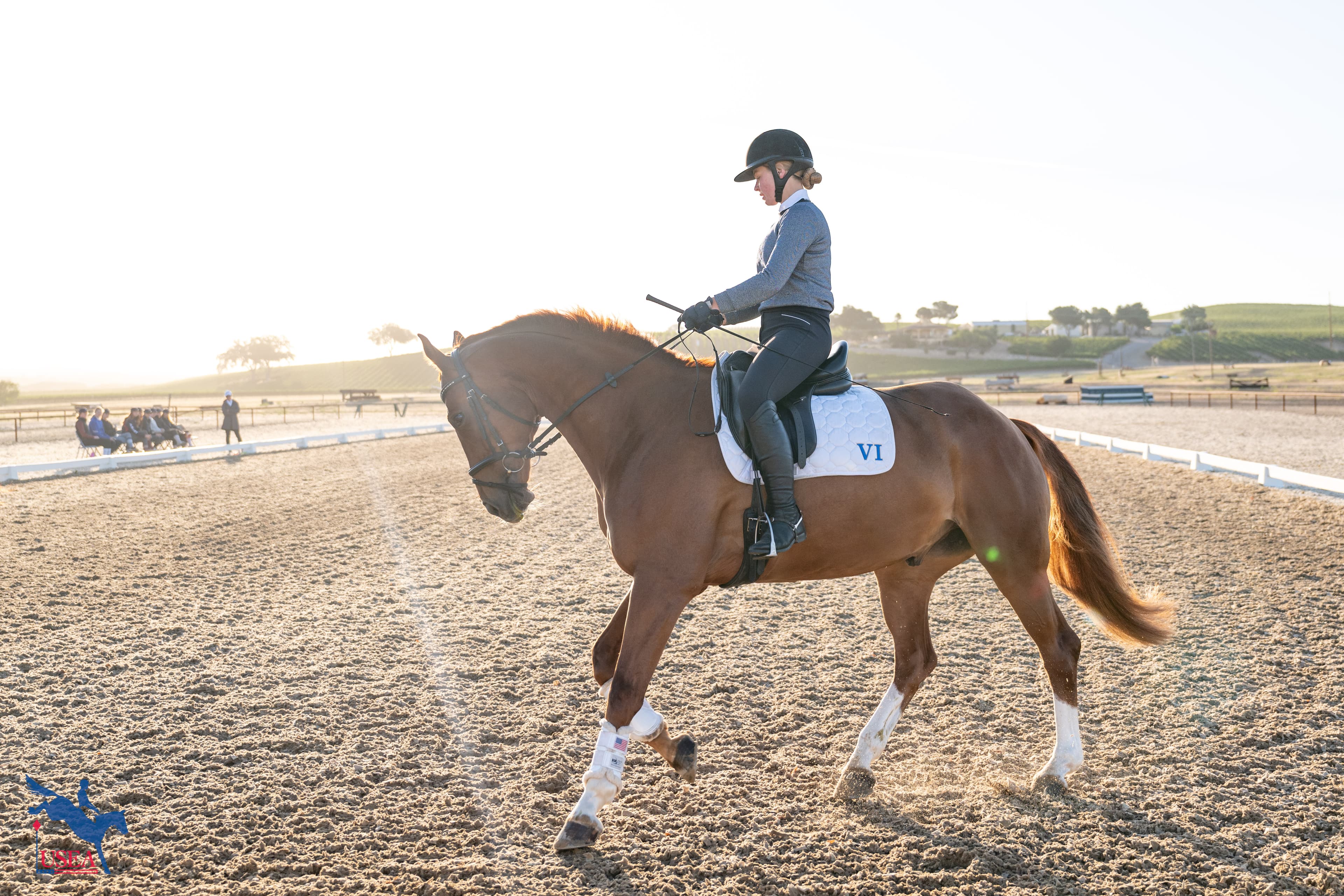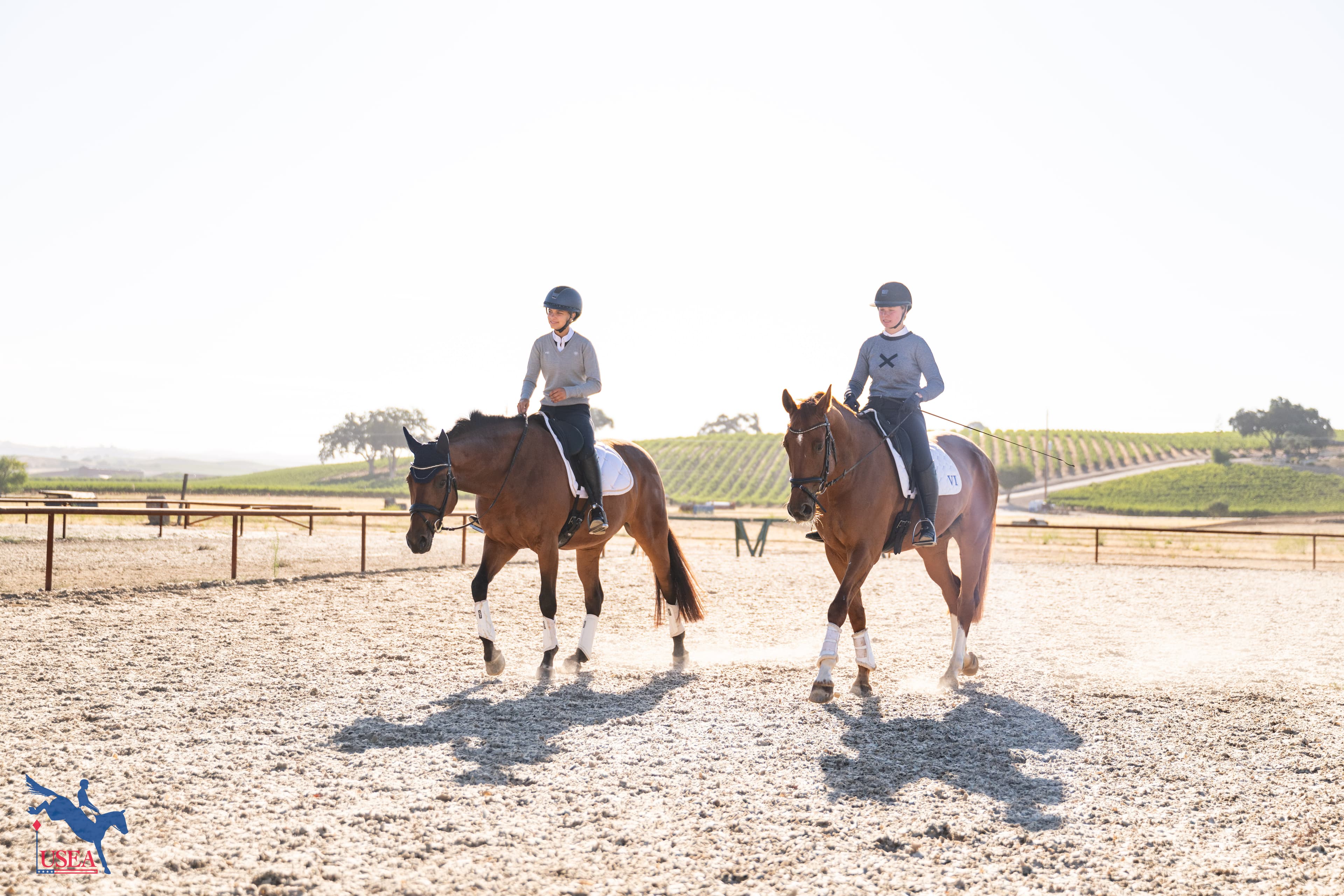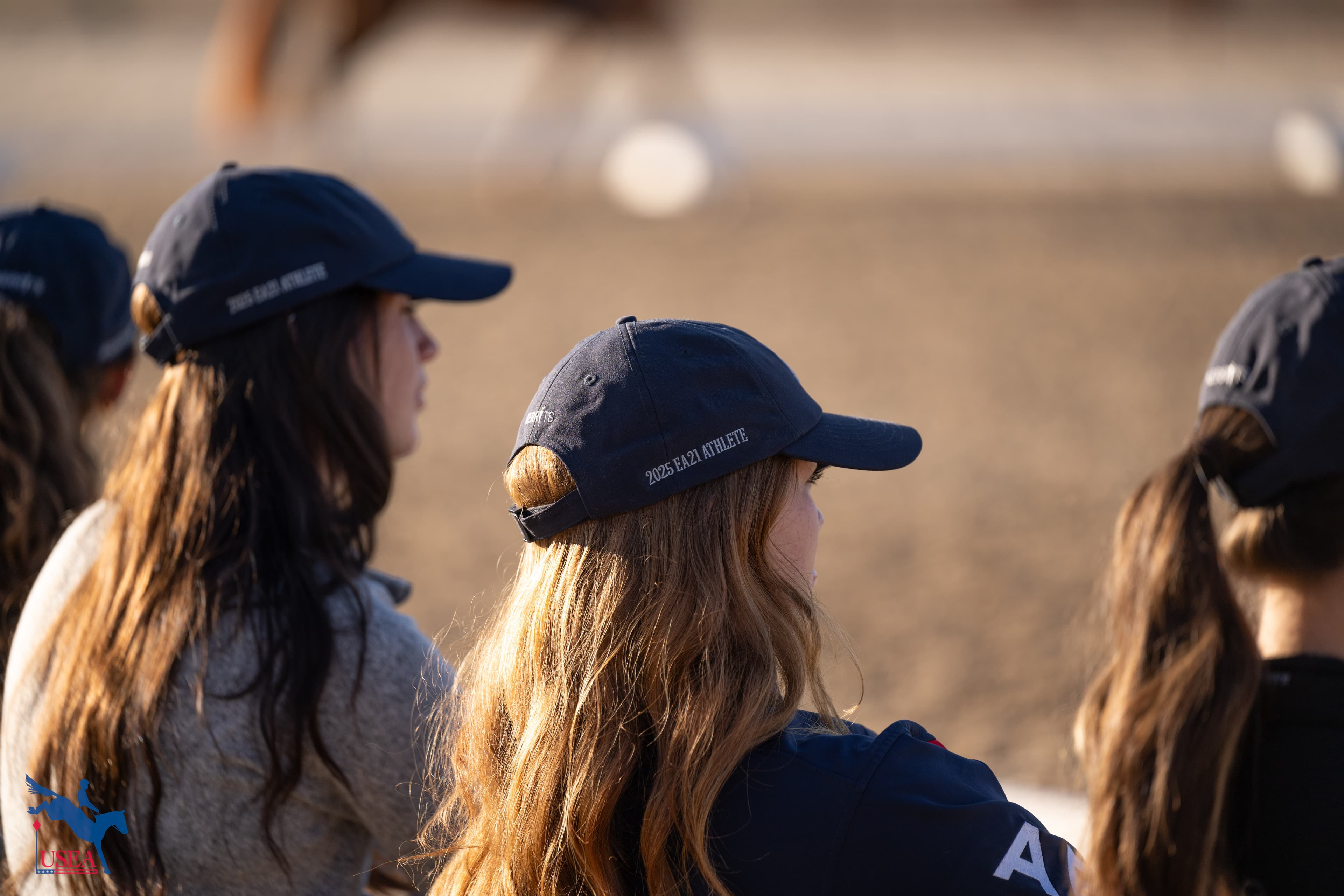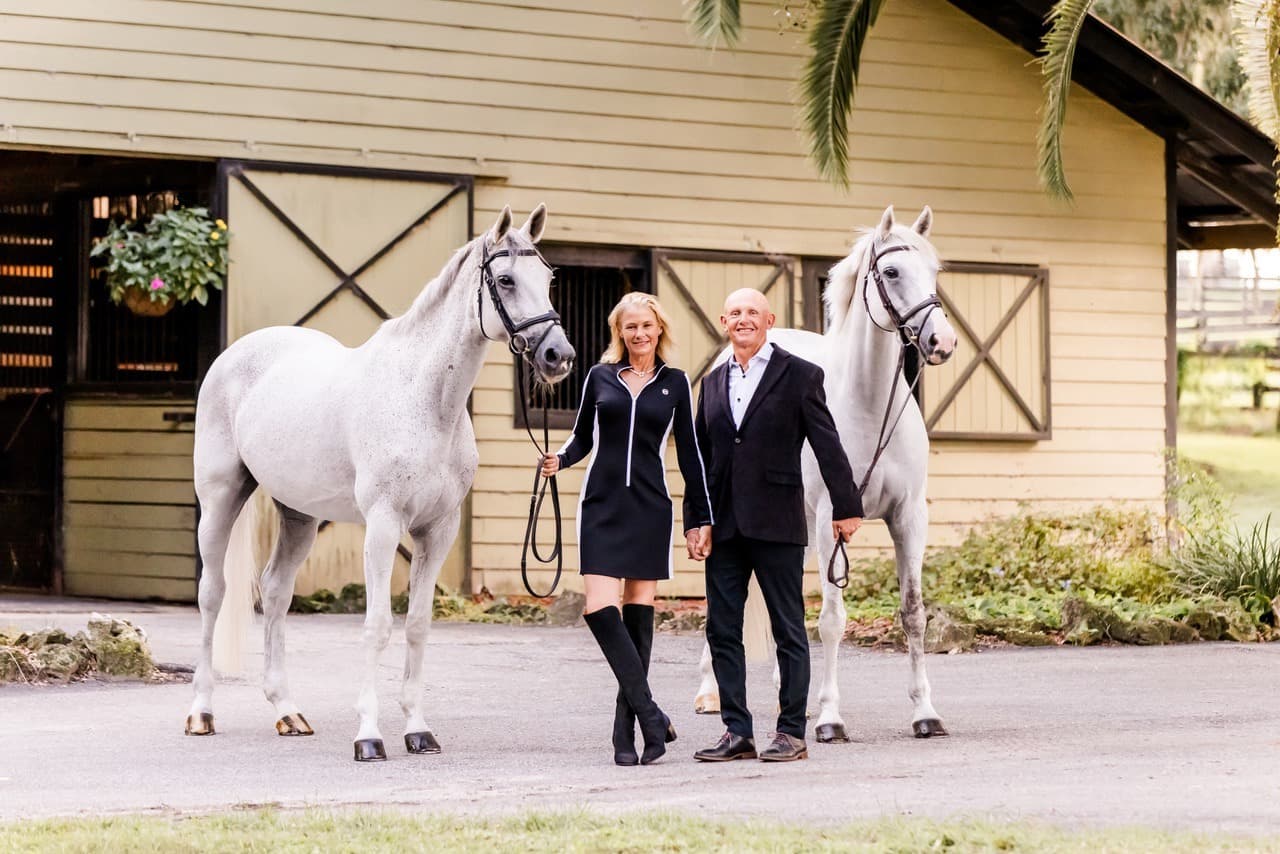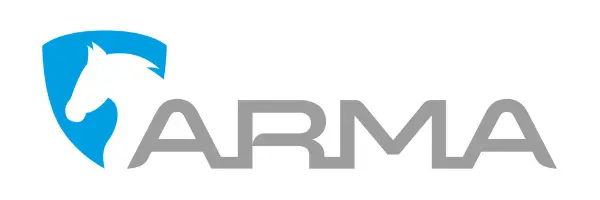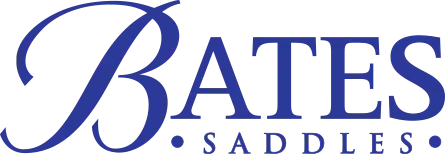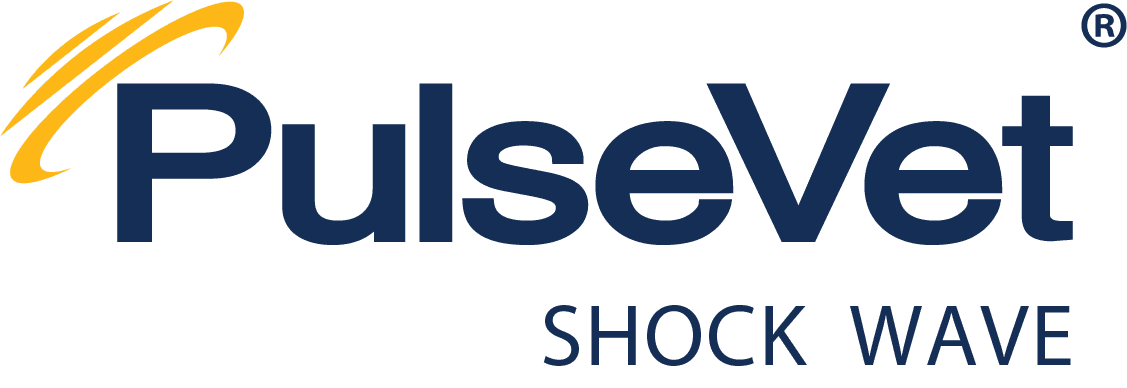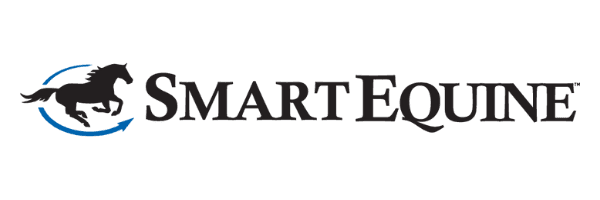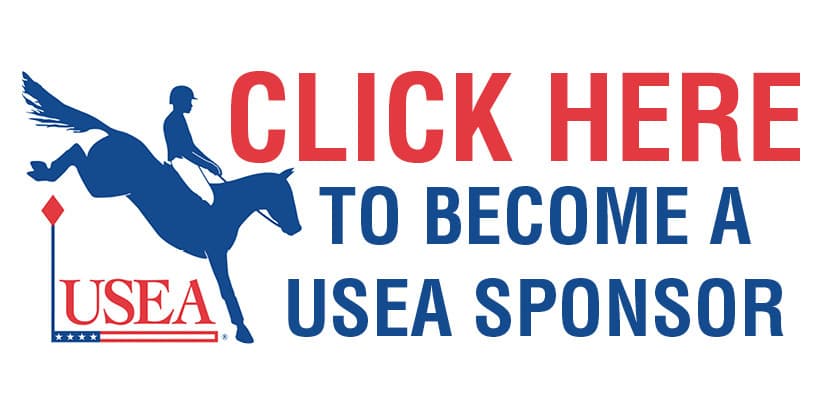Work in Progress on Day 1 of the EA21 West I Reginal Clinic
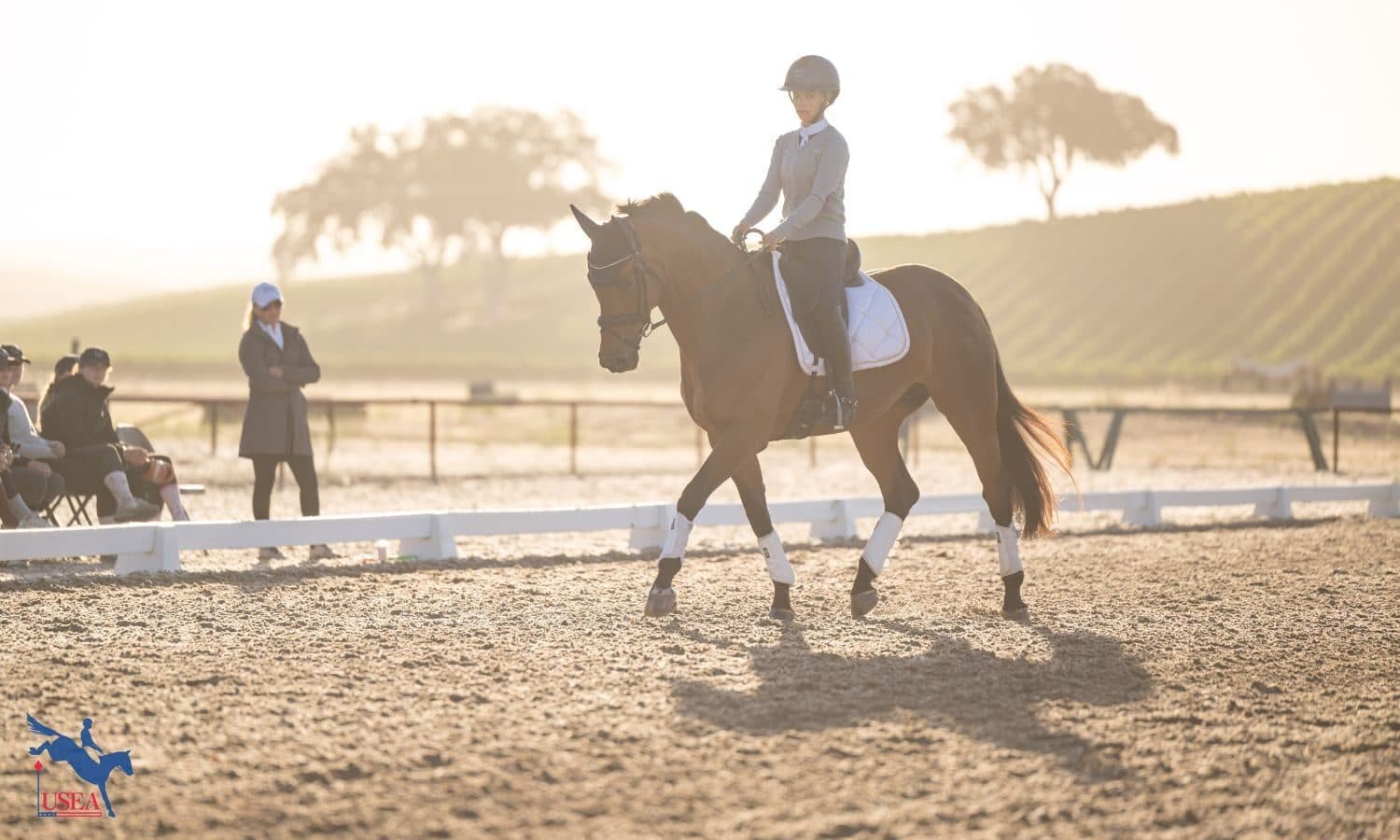
July 29—Paso Robles, Calif.—What do I have today in my ride? What can I build on now? That was EA21 Coach Emily Mastervich’s mantra for the first day of the USEA Emerging Athletes Under 21 (EA21) West I Regional Clinic held at Twin Rivers Ranch. Formerly the coach for the EA21 Regional Clinics at Stable View, this year’s coach swap brought her to California for the first time.
Last night’s round table discussion about the German Training Scale, the foundational backbone of the program developed alongside other coaches and EA21 Director of Coaching David O’Connor, and the basics of riding led to unique exercises for every horse and rider.
“I told these guys I was really hoping to pass along some of the years of knowledge that I have dealing with all types of horses,” Mastervich remarked. “You can really tailor things to helping the horses develop their weaknesses without picking on them, so we did quite a lot of that today.”
Indeed, no two lessons looked alike. The 12 athletes were broken up into six groups of two and each horse and rider combo received their own exercise, even when athletes swapped rides.
The lessons all began with no instruction to the mounted riders while Mastervich worked with those on the sidelines to develop their trainer’s eye. Some might have a future in coaching, and some might have a future in riding, so learning what to look for on the ground can prove critical.
“You will see a lot to work on,” she explained. “As trainers, you must prioritize. What is the most important thing of the day?”
After riders demonstrated their typical warmups, Mastervich led the group, including the riders, in an open discussion about their horse’s individual challenges and explained the reasoning behind the exercise she was giving them.
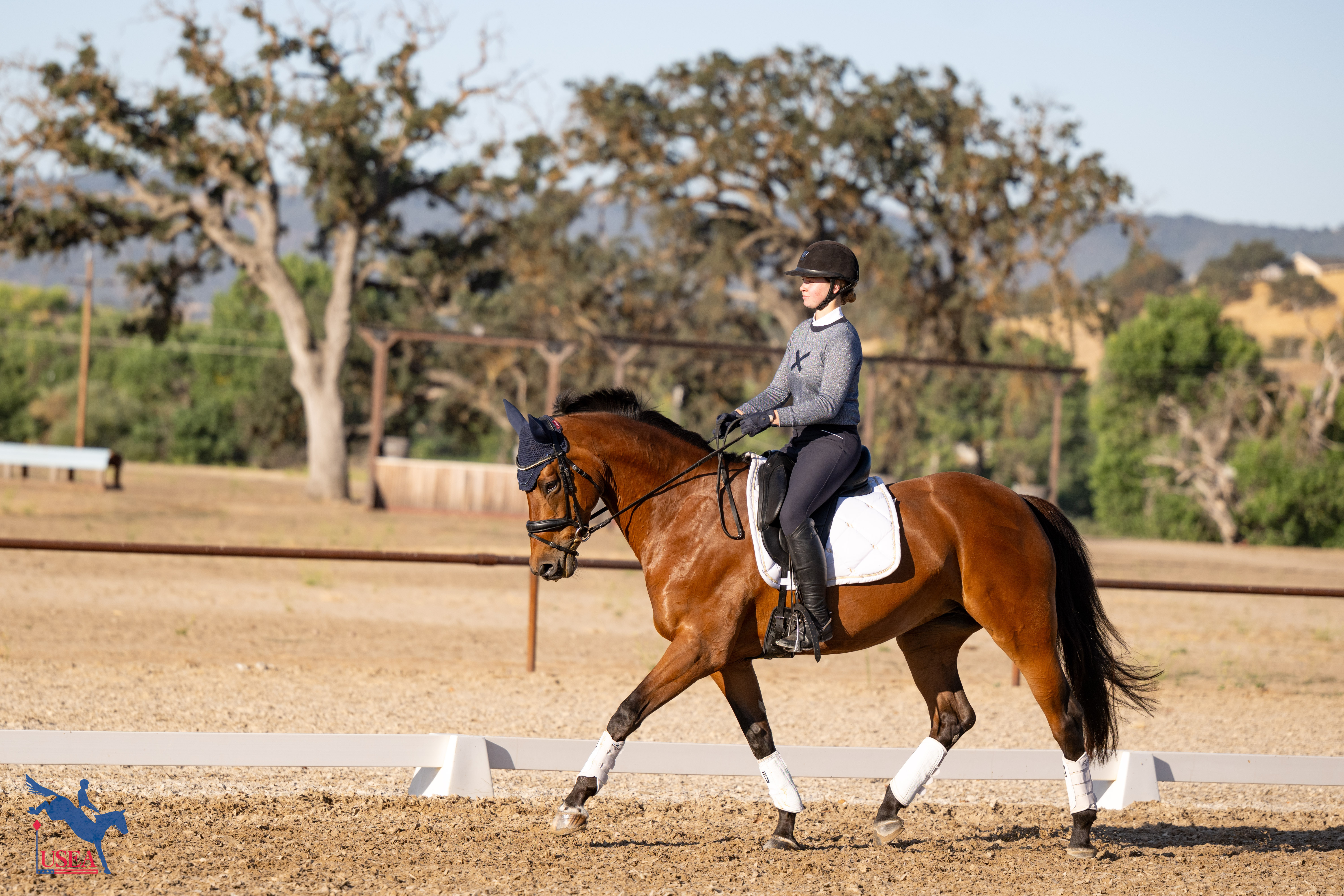
For one horse with good rhythm but struggling to find impulsion and activity in the hind end, she asked the rider to leg yield down the long side from the quarter line back to the rail and finish with a turn onto the next quarter line or a circle, depending on the level of engagement the rider needed to recreate. For a wiggly ride, she asked the rider to use a short diagonal to the centerline at the canter to work on straightness.
A real theme that emerged from the day was finding an exercise that gave the horse’s weakness an opportunity to be challenged without being drilled while following the training scale of rhythm, suppleness, contact, impulsion, straightness, and collection.
“[Mastervich] really helped me find a different style of riding my horse that helped him feel more confident in the flat,” Jillian Mader said of her ride who needed to work on more impulsion. It’s her third time attending the program and her first time going through the curriculum with Mastervich as the coach. “I always want to work on furthering my education. I think I can learn from the other girls and all the coaches. Expanding my knowledge is super important to me, and this is a great opportunity to do that. [The coaches] have slightly different teaching styles. But honestly, it's the same idea German riding scale and building up from the basics, they just have different approaches to teaching them.”
Paige Beauchamp Crandon, a three-year auditor but first-time participant, agreed that the specific exercise wrought positive change on her ride who also struggled with impulsion. “At first, my horse was a bit stuck in her own body, and it didn't feel like she was able to open up. After doing these exercises and learning from Emily, it definitely helped influence her to be a bit more confident and use herself in a better way.”
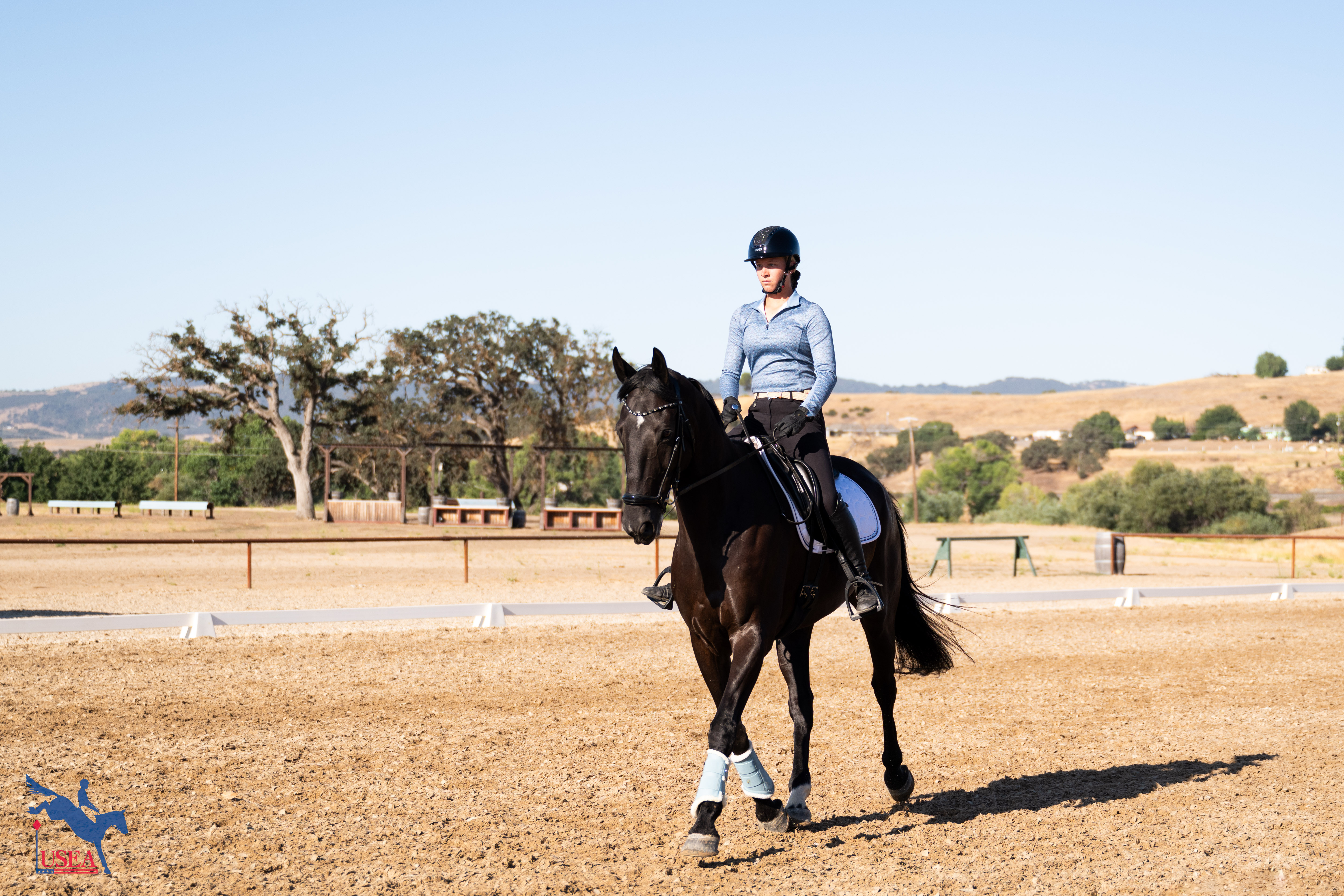
Swapping onto her partner’s mount additionally highlighted some of the ways to create longevity in her riding career. “It was really interesting to be able to see how different our horses are and how the different ways that you can ride impacts even your own horse. Learning how to adapt and change depending on the horse and how they're feeling is a big part of this sport. It helps you to be able to better understand horses in general, not just like a specific type of horse that you've learned to ride in that one certain way.”
Another first-time participant this year was Greylin Booth. Her theme was to work on straightness. When asked about what initially made her apply, she “thought it would be really valuable, both to get to learn from other young rider peers in the area and from a coach who has been there and done that. I think being able to focus more on my seat and less on the leg and hand [on my catch ride today will] be really helpful tomorrow when I’m riding my own horse. Just to try and make sure that I'm using all the different aids that I have to offer.”
The specificity of the exercises and Mastervich’s technique of changing of one variable at a time helped Kylie Scott home in on some long-term solutions to issues she has been struggling with. “There's different varieties of those [exercises] I can do with different horses, and I think those will just help me soften my body and soften whatever horse I'm working on,” she said. “It helps put all the steps together. We also got to talk through some theories, like the theory of dressage, that helped me apply things a little more and be more specific about what I was doing.”
Amanda Boyce, another third-year participant, summed up the riding portion well: “There's a lot of emphasis on the basics and the foundation of riding. It's easy to over complicate things. So, it's nice to have the reminder that we all have access to the same German Training Scale. It's good to go back to the foundations and see that even though our horses are all so different, we all are working on the same basic principles.”
Athletes finished the day with a long and enthusiastic Q&A session alongside a stable management talk that ran the gamut from horse nutrition to fitness management to stud selection to body conditions.
The EA21 West I clinic resumes on Wednesday for the jumping portion at 7:00 a.m. PST.
West I | Twin Rivers | Paso Robles, California
The Participants:
- Olivia Baca
- Camille Batoy (First alternate accepted from Waitlist)
- Julia Beauchamp Crandon
- Paige Beauchamp Crandon
- Greylin Booth
- Amanda Boyce
- Jillian Mader
- Gabriella Ringer
- Kylie Scott
- Emma Slocum
- AnniePearl Stroud
- Anya Ostrovsky
Don't forget to follow the USEA’s coverage on social media!
Facebook | Instagram | Threads
About the USEA Emerging Athlete U21 Program (EA21)
The purpose of the USEA Emerging Athletes U21 Program (EA21) is to identify and provide consistent quality instruction to the next generation of elite event riders. The aim is to create a pipeline for potential team riders by identifying and developing young talent, improving horsemanship and riding skills, and training and improving skills and consistency.
The USEA Emerging Athletes U21 Program was launched in 2022 with a model of five summertime regional clinics taught by carefully selected USEA Eventing Coaches Program (ECP) coaches, leading to a winter national camp consisting of selected Young Riders from the regional clinics. Athletes who are 21 years or younger, are current members of their USEA Young Rider Area program, and are established at the Training Level or higher, are eligible to apply for the EA21 program. Click here to learn more about the USEA EA21 Program.
The USEA would like to thank ARMA, Bates Saddles, Horse Illustrated, Kerrits, PulseVet, Ride iQ, Schneiders Saddlery, Sidelines Magazine, WeRideTogether, and YETI for sponsoring the USEA Emerging Athletes U21 Program.
